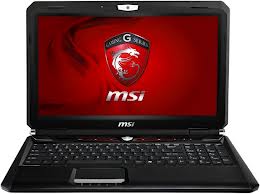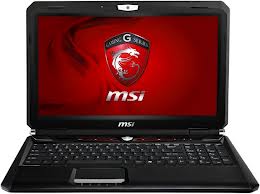 As you know, today we have a plethora of different device forms available – from multimonitor (eyefinity) desktops to tablets and even phablets. However still, for anyone who need to do semi-decent tasks in their devices (work, gaming, design), or those who want to use a device as their portable, main computer unit, laptops are still the portable solution.
As you know, today we have a plethora of different device forms available – from multimonitor (eyefinity) desktops to tablets and even phablets. However still, for anyone who need to do semi-decent tasks in their devices (work, gaming, design), or those who want to use a device as their portable, main computer unit, laptops are still the portable solution.
What is the idea about
One major advantage of such a decent laptop is that, not only you can use it mobile on the go while you are traveling, but also when you plug a sizeable monitor and a wireless/chord keyboard and mouse to it, you can easily use it for a desktop system replacement. The moment you set up yourself in your comfortable workplace chair and desk, you have an ergonomic setup with such an arrangement. And what is best is – whatever you do on your computer, stays on it, whether you go mobile or not, without even needing to sync. That is, if it is powerful enough to be used as a desktop system replacement of course.
Of course, one cannot expect laptops to be as powerful as purpose built, desktop computers – like strong 3d design units, or high end gaming rigs. Neither now, nor in future, smaller form factors will never be able to muster the power of modular, purpose built standing desktop pcs – the moment a high tech advancement becomes available on a smaller form factor platform, a bigger, better and more badass version of it is already out and usable in desktop platform. It would be enough if it was able to perform daily tasks you do on average, well. And regardless of what you used, it was not possible to do any kind of semi-heavy work/tasks like 3d design, or medium-level gaming.
Of course, you could overcome this by buying a more expensive, powerful laptop which had a good cpu, good memory and a discrete gpu. However, even with this kind of strength, you would be only attaining still the medium level performance for things like gaming, for example – despite you have paid quite a price. And with a lot of baggage – overheating, short battery life, and various other issues.
Enter AMD APUs
 Not anymore. The cpu manufacturer AMD, which bought graphics card manufacturer ATI a while ago, had come up with an innovative idea – combining a cpu and a gpu in one chip – in an effective way – the APU. This was not something that wasnt done before – Intel had various models with integrated gpus, however their 3d/graphics performance was lacking, nowhere near anything comparable to what you can see on the desktop.
Not anymore. The cpu manufacturer AMD, which bought graphics card manufacturer ATI a while ago, had come up with an innovative idea – combining a cpu and a gpu in one chip – in an effective way – the APU. This was not something that wasnt done before – Intel had various models with integrated gpus, however their 3d/graphics performance was lacking, nowhere near anything comparable to what you can see on the desktop.
Combining the strength of ATI gpus and their cpu technology, AMD unveiled the APU concept – in which cpu and gpu shared various common resources for common tasks, therefore boosting both units’ performances. Add to that the fact that more and more software, even the browsers, have started utilizing gpu units that are available in any computer,(yes, including desktops) the new concept got much advantage. And, AMD was smart – they designed entire concept around the idea of low power consumption, therefore attaining very long battery life for mobile computing units – leading to a silent, fast, cool and long lasting computer unit, with good performance.
AMD first introduced entry level versions of this processors in netbooks and entry level laptops, and also desktop around 1.5 years ago. And, since their introduction, these cpus have been selling like hotcake, with AMD being unable to cope up with unexpected demand – a sure sign that a concept just works. At that point it was already mentioned that AMD was going to deliver new versions of these units with at least 10% performance improvement every year. 2012 brought no surprises, and A10 series of APUs have entered the market in both mobile and desktop forms. And even in their earlier A6, A8 forms, APU equipped entry level laptops, netbooks were able to play tolling games like Starcraft 2 with medium to high detail settings – a sure sign of a device which is strong in 3d and cpu intensive everyday tasks.
So, now what
 Now, with the advent of A10 series APUs, it is entirely possible to abandon your desktop and use an apu equipped laptop for all your computing needs – this time including 3d gaming, design, rendering heavy tasks, as good as your desktop. Leave aside ordinary tasks like document handling, surfing, email – these are a breeze for such a powerful computing unit.
Now, with the advent of A10 series APUs, it is entirely possible to abandon your desktop and use an apu equipped laptop for all your computing needs – this time including 3d gaming, design, rendering heavy tasks, as good as your desktop. Leave aside ordinary tasks like document handling, surfing, email – these are a breeze for such a powerful computing unit.
Contrary to the earlier platforms, A10 series can easily cope up with modern games’ performance easily and render them playable in fluid fashion with high graphics settings – as can be seen from reviews with benchmarks. The Intel HD 4000 comparison they have made is obligatory, since HD4000 is also a combined graphics-cpu platform, however as you can see there is no comparison in between them – the new A10 units directly deliver desktop-level performance.
Ironically, at this point, it is quite possible for these units to easily match the gameplay the desktops offer in modern games – the main reason for this is because games are made to also work on consoles, which are always some measure behind in computer technology. Therefore, there may not be any visible improvement you may gain by using a strong desktop to run a modern game which was also designed to run on a console – the APU powered laptop may provide the performance you need to play the game just as well. In such cases, only thing you would be receiving would be increased frame rates on a desktop, which may not be noticeable with your naked eyes.
Im not a gamer, so what ?
 Dont be mistaken – the reason why so much importance to gaming performance was given in this article is that, gaming is something that taxes and tolls a computing platform quite a lot, and therefore bringing its strengths and weaknesses out. 3D rendering uses both cpu, and gpu and memory extensively, and games require proper and synchronous synergy of other components like hard disk, mainboard even. This directly translates into performance in other tasks an regular or high level user needs – high definition video, high definition music, web browsing. Even Facebook makes your browser render pages loaded with taxing scripts – on average a Facebook page refresh runs 1 Mb of code in your computer – loaded.
Dont be mistaken – the reason why so much importance to gaming performance was given in this article is that, gaming is something that taxes and tolls a computing platform quite a lot, and therefore bringing its strengths and weaknesses out. 3D rendering uses both cpu, and gpu and memory extensively, and games require proper and synchronous synergy of other components like hard disk, mainboard even. This directly translates into performance in other tasks an regular or high level user needs – high definition video, high definition music, web browsing. Even Facebook makes your browser render pages loaded with taxing scripts – on average a Facebook page refresh runs 1 Mb of code in your computer – loaded.
So, long story short, with such a computer you can do any task, be it work, leisure or utility related, easily on your laptop from this point on. All you need to turn it to a desktop is to put it on the side on a desk, plug a big monitor and keyboard & mice to it – voila, you have a proper desktop. Going home ? Just unplug it and voila – you have all your files, mails, applications and videos/music right with you even at home. Total freedom.
Lets not forget the most important part – price
Yes – that was the initial point – now, you can achieve this kind of mobility and freedom without having to pay exorbitant money for purpose built, heavy, hot-running and battery gulping laptops. Instead, you have a good performance, long-lasting, cooler and more portable laptop. To quote from Notebookreview.com;
The 6-cell lithium-ion battery in our test system is relatively average for modern notebooks and features rating of 11.1V, 4.84Ah and 53.7Wh. Our standard battery rundown test (Windows 7 Balanced power profile, 70% screen brightness, wireless active, and refreshing a web page every 60 seconds) gave us a total run time of 8 hours and 11 minutes.
Thats 8 hours running time for a high performance laptop – which is quite spectacular. And the foremost boon is that it is much cheaper compared to any other platform out there –
A10s can be found as low as ~$500 range, whereas A6s can be found as low as ~$350 at retailers like amazon.
With these kinds of prices, a portable unit which can be used both at work, and at home for any task you may need, is quite affordable and possible.



